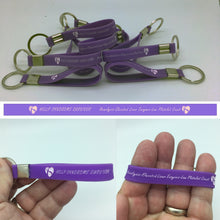WHAT ARE THE SYMPTOMS OF HELLP SYNDROME?
The physical symptoms of HELLP syndrome may seem at first like preeclampsia and include one or more of the following symptoms:- Epigastric (abdominal) or substernal (chest) pain, including abdominal or chest tenderness and upper right side pain (from liver distention)
- Nausea, vomiting, or indigestion with pain after eating
- Headache that won't go away, even after taking medication such as acetaminophen
- Shoulder pain or pain when breathing deeply
- Bleeding
- Changes in vision including blurred vision, seeing double, or flashing lights or auras
- Swelling, especially of the face or hands
- Shortness of breath, difficult breathing, or gasping for air
Signs (which are measurable) to look for include:
- High blood pressure
- Protein in the urine
- Abnormalities in laboratory blood work (increased liver enzymes, decreased platelets, and the presence of hemolysis)
The most common reasons for mothers to become critically ill or die from HELLP syndrome are liver rupture or stroke (cerebral edema or cerebral hemorrhage). These can most often be prevented when caught in time. If you or someone you know has any of these symptoms of HELLP syndrome, please see a healthcare provider immediately.
HOW COMMON IS HELLP SYNDROME?
Among pregnant women in the United States, 5 to 8% develop preeclampsia; 15% of these develop HELLP syndrome. This mean approximately 45,000 women per year will develop HELLP syndrome in the United States. There is some difference in opinion among experts as to what lab values should be used to diagnose HELLP syndrome, so these estimates are approximate.
WHO IS AT RISK OF GETTING HELLP SYNDROME?
Patients who have preeclampsia or eclampsia are at higher risk of developing HELLP syndrome. However, it is important to note that not all HELLP syndrome patients exhibit the classic signs (high blood pressure and protein in the urine) that typically characterizes the diagnosis of preeclampsia. It can occur more often in patients with a family history of preeclampsia or HELLP syndrome, or a history of certain autoimmune conditions or clotting disorders, as well as in patients with no risk factors. (Please see our FAQs for a full list of risk factors for preeclampsia.)
HOW IS HELLP SYNDROME CLASSIFIED?
HELLP syndrome is classified according to the severity of certain blood test values which reflect the condition of the mother’s blood vessels, liver and other organ systems. The lower the class, the more dangerous the situation.
- Class I (severe thrombocytopenia): AST ≥ 70 IU/L, LDH ≥ 600 IU/L, platelets ≤ 50,000/uL
- Class II (moderate thrombocytopenia): AST ≥ 70 IU/L, LDH ≥ 600 IU/L, platelets > 50,000 ≤ 100,000/uL
- Class III (mild thrombocytopenia): AST ≥ 40 IU/L, LDH > 600 IU/L, platelets > 100,000 ≤ 150,000/uL
AST (aspartate aminotransferase) is an enzyme that your liver makes, which is usually in very low quantities. High quantities can indicate damage to your liver.
LDH (lactate dehydrogenase) is an enzyme involved in energy production that is found in almost every cell and organ of your body, including your liver and kidneys. LDH is released from the cells into your bloodstream when cells are damaged or destroyed. Higher LDH levels in blood may be a sign of tissue damage or disease.
Platelets (also known as thrombocytes) are colorless blood cells that help blood clot and stop bleeding by clumping and forming plugs in blood vessel injuries. Thrombocytopenia is a condition in which you have a low blood platelet count and is one of the defining characteristics of HELLP syndrome.
HOW IS HELLP SYNDROME TREATED?
Most often, the definitive treatment for women with HELLP syndrome is the delivery of their baby and the placenta. During pregnancy, many women suffering from HELLP syndrome require a transfusion of some form of blood product (red cells, platelets, plasma). Corticosteroids can be used to improve fetal lung development in the very preterm pregnancy; some care providers have reported beneficial maternal effects to slow disease progression, lessen negative impact on the liver and central nervous system, and shorten hospitalization.
If HELLP syndrome is diagnosed early and the baby is delivered, the mother generally will have better outcomes. If the diagnosis is delayed or it was managed too conservatively, a woman's likelihood of developing HELLP syndrome and having poor outcomes is higher.
WHAT CAN I DO TO PREVENT HELLP SYNDROME?
Unfortunately, there's currently no way to prevent this illness. The best thing to do is:
- Get yourself in the good physical shape before getting pregnant
- Have regular prenatal visits during pregnancy
- Inform your care providers about any previous high-risk pregnancies or family history of HELLP syndrome, preeclampsia, or other hypertensive disorders
- Understand the warning signs and do not delay reporting them to your healthcare provider, including trusting yourself when "something just doesn't feel right"
- Talk to your provider about aspirin. Aspirin has been shown to reduce risk of preeclampsia, which in turn may reduce risk of developing HELLP syndrome






